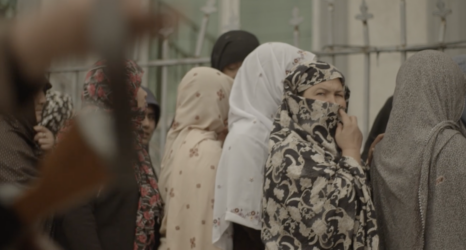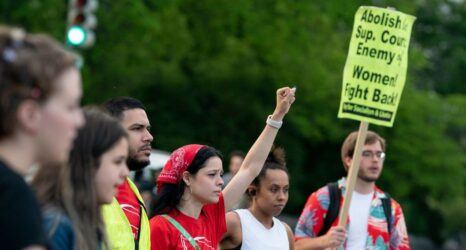These are the STEM rock stars of the next generation.
18-year-old Amber Yang remembers how her frequent visits to the Kennedy Space Center catalyzed her interest for the unknown. She wanted to find answers to her questions and decided early on that science was the best way to do that. So in middle school, she joined the robotics team.
Yang was the only girl. She experienced microaggressions as a member of the team which subtly taunted that she had picked the wrong interest to pursue: The boys in the club would only talk with one another, assumed her answers were wrong and habitually dismissed her ideas. “If I made a mistake in class or said something that was untrue, I got criticized and critiqued more readily than if a boy were to do the same thing,” Yang explains. “These are subconscious actions because you’re the minority in a room, with no one to back you up, so you’re automatically perceived as weaker.”
Yang just finished her senior year at Trinity Preparatory School in Orlando, Florida. She recently delivered a TED Talk that encouraged young girls and women to subvert the stereotype that women can’t participate fully in STEM by pushing back and demanding more from the field. And somewhere between classes, extracurriculars and day-to-day activities, she is also one of the top female finalists of the co-ed Regeneron Science Talent Search (STS), a prestigious research competition for high school seniors pursuing STEM.
STS is the oldest competition of its kind, presented by the Society for Science & the Public. Each year, up to 2,000 young brains submit a research project and paper, grades, teacher recommendations and essays to compete for more than $1.8 million in awards. 40 of them are invited to Washington D.C to participate in a rigorous judging process that includes the presentation and questioning of their research. This year, 18-year-old Indrani Das took home the top award for her study into neurons and brain injury. Although she was the only girl on the dais, she was far from alone in the pool of top competitors, many of whom were young women.
Yang was recognized, in part, for the computer program that she’s spent the last four years creating. The program can predict the paths of over 500,000 pieces of space debris currently orbiting the Earth. Her research could save the lives of astronauts in the International Space Station.
“These individuals are brought in for their unique scientific research, but also for their aptitude about science, engineering, and mathematics,” explains Maya Ajmera, president and CEO of Society for Science & the Public. “We are looking for the future science leaders of our country.”
17-year-old Vrinda Madan, another finalist, co-founded an initiative called “Project Be-YOU-tiful” when she was in eighth grade. The aim of the project was to empower women. A recently graduated senior, her creation has since grown, granting her the opportunity to attend leadership seminars, to present on issues of gender parity, and to be a delegate at the UN’s International Day of the Girl Summit. She was the STS competition’s ninth place fininisher, awarded $50,000 for her analysis of a 24-compound biochemical library, where she identified two chemicals that appear to target malaria in a way that current anti-malarial medicine does not.
Madan explains that her advocacy work and her STEM research intersect in many ways, as there is still a probable gap between cis male roles and the roles of other genders in STEM. She believes that while advocacy is necessary at all levels, it is especially pertinent in the STEM fields. Madan recalls a time when a male peer asked what her dad did, to which she answered that both of her parents are working physicians. The peer was surprised and told her that he didn’t think women like her mother should be doctors, but rather, should stay put in the home.
“Part of the reason for the imbalance is that women often internalize the idea that they aren’t as good as men, and this becomes a self-fulfilling prophecy,” observes Madan. “[Women] end of up dropping out at young ages, they don’t pursue hard science majors. There needs to be more promotion because we often don’t realize our own potential or capability.”
Yang’s experience echoes that. “When a teacher asks a question, mostly the boys will respond immediately, even if they’re completely wrong,” she says. “If a girl responds at all, I’ve noticed they usually open with, ‘I’m not sure this is correct, but…’ and then she says her answer.”
Ajmera points out that only a handful of top place STS finishers have been female identifying, but that that’s slowly changing. For the first time in the competition’s 75-year history, 2016 marked the first time that female finalists actually outnumbered male ones. Ajmera says that she can count on one hand how many top place winners have been female, and that though the STEM field has become more inclusive in recent years, coinciding with the women’s liberation movement, there is still a long way to go.
The Society for Science & the Public is taking some of the actions necessary to diversify the STEM field, cultivating a greater sense of urgency amongst educators across the country. The classroom, Ajmera says, is a good place to start. Through an advocate grant program that funds teachers and mentors as STEM advocates to underrepresented students, the organization helps to support and nudge young people to build out their skills, preparing them for what’s to come. They also organize a research teachers conference to promote the importance of including girls and underserved people of color in STEM.
“Diversity is good in any setting,” explains Ajmera. “Women can look at problems differently, or look at problems that men might not be looking at all. Take women’s health, for example. They have played a very strong role in that research.”
The competition’s first place winner, Das, who received $250,000 for her three-year study of brain injury that identified a potential major mechanism of neuron death and a possible treatment method, hopes that her research will ultimately serve humanity. Outside of school, she volunteers as an EMT and hopes to one day pursue a career as a physician scientist. She explains that though the resources to pursue STEM exist for anybody, they’re not always readily accessible to everybody. Das believes that ideas have no classification and that for her; science is collaboration at its finest, regardless of gender.
A General Electric commercial that reinvisions Mildred Dresselhaus as a rock star is something Ajmera shows her four-year-old daughter for confidence and inspiration. What would STEM be like if we treated famous female scientists like rock stars or sports icons, she asks. Madan, whose role model Marie Curie influenced her, answers: “Television shows and sports often get recognition and fame, but if we just put a quarter of that energy into STEM, we could make so many advances that we wouldn’t be able to make otherwise.”
Ajmera adds that now is the inflection point for STEM. For her, and Society for Science & the Public, the key is to aid in developing the talent pipeline for the future by supporting young people of all genders and backgrounds. Companies, the federal government, and educators are starting to see that, too. And with Das, Madan, and Yang headed off to some of the nation’s top colleges next year, majoring in subjects like biomedical engineering, biophysics, and biochemistry, it seems the future is bright for women in STEM.
“We’re counting on them big time to make the world a better place. We’re counting on them to be our future scientists, engineers, mathematicians, innovators, and entrepreneurs,” concludes Ajmera. “We want them to create the next biotech company, the next Google, the next Facebook—this is critical. These young women are the best and the brightest.”
We couldn’t agree more.





